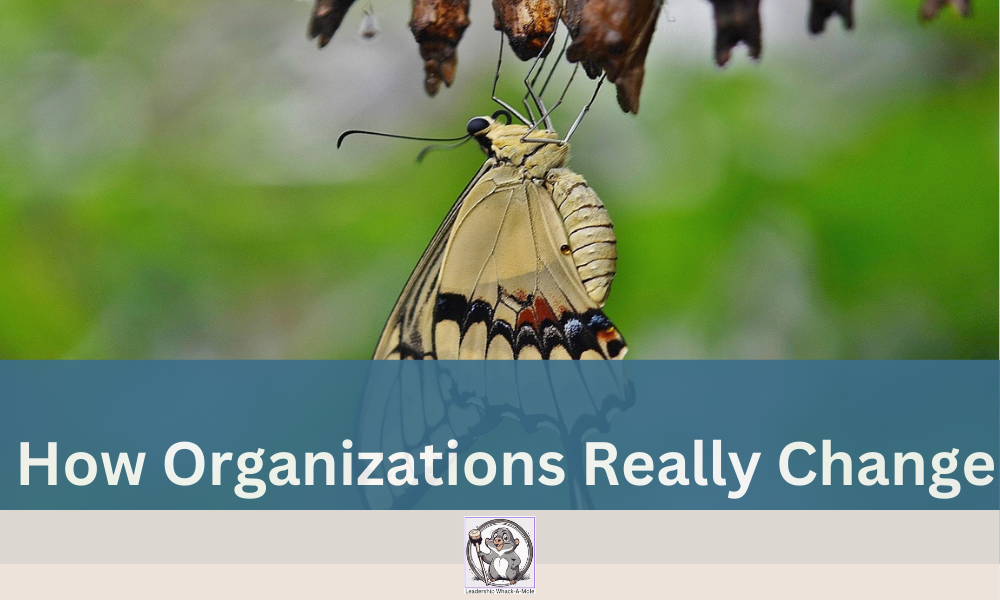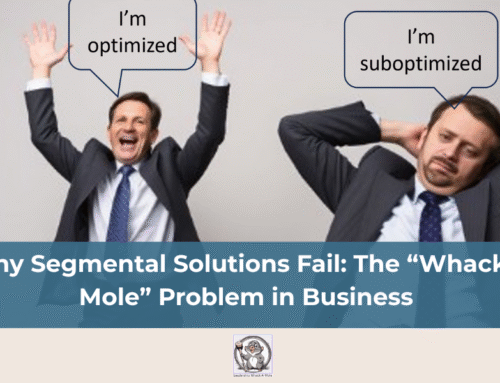
By Jeff Fierstein
In my publication, “How Organizations Really Change: A Research Model,” I introduced a change model grounded in empirical research findings:

Below is an overview of the key components of the model:
- Ongoing Communication
Research indicates that employees are more likely to embrace change when they understand the rationale behind it. In the organizations studied, senior leadership ensured transparent and continuous communication about the company’s market position. As environmental conditions worsened, employees were informed of the challenges and, in response, became more supportive of change initiatives rather than resistant to them. - Leadership Vision and Core Ideology
A clearly articulated vision from top leadership provided direction, motivation, and a sense of purpose. This vision served multiple functions: it presented a compelling future, guided organizational direction, energized employees, and demonstrated that change was a strategic step—rather than a reactive or haphazard decision. A strong core ideology, comprised of enduring values and purpose, offered a stable foundation to support innovation and progress. - Strategic Contingency Planning
High-performing organizations maintained a forward-looking perspective by continually scanning the external environment and evaluating the feasibility of their goals. These organizations adapted their strategies and reallocated resources in anticipation of unforeseen developments, enabling them to remain resilient in the face of change. - Stakeholder Input
Effective change efforts often incorporated input from a broad range of stakeholders. This feedback was instrumental in shaping strategic direction and organizational objectives during the environmental scanning process. - Results-Driven Goals
Change efforts were centered around clearly defined strategic outcomes. Rather than adopting change initiatives based on trends or external pressures, organizations selected changes that were aligned with targeted business results. Change agents were held accountable for delivering these results—not merely for implementing a program. These objectives, while ambitious, were essential in guiding innovation and organizational transformation. - Vision and Results as Catalysts for Change
Successful change initiatives were rooted in a clearly communicated vision and desired outcomes. Rather than prescribing specific methods, senior leadership articulated expected results and allowed organizational units the autonomy to experiment with different approaches. This decentralized model avoided imposing top-down programs and instead encouraged practical, localized solutions aligned with the overarching vision. - Innovation through Experimentation
Front-line units employed cross-functional collaboration to pursue innovative approaches tailored to their contexts. Senior leadership communicated desired outcomes and then delegated responsibility for developing solutions to specific teams. Innovation was not mandated across the entire organization; instead, it was piloted locally, enabling focused experimentation and rapid adaptation. - Cross-Functional Design
Many successful organizations adopted cross-functional structures—initially matrix-based and more recently team- or project-based. These designs promoted collaboration and innovation across organizational boundaries. - Operational Problem Solving
Some organizations achieved meaningful change by assembling temporary, cross-functional teams to address urgent operational challenges. These ad hoc solutions, once validated, were often replicated in other parts of the organization to drive broader transformation. - Coalition Building
Change efforts frequently encountered resistance. To overcome opposition, change agents built strategic coalitions within the organization. These alliances were critical for securing necessary resources and influence to advance change. Cross-functional structures further enabled effective coalition building. - Surfacing Solutions
Leaders with strong political and networking skills played a vital role in successfully launching new ideas. Timing was essential—innovators built support gradually, eventually gaining executive sponsorship. The likelihood of a solution being adopted increased during periods of environmental disruption, when leadership was more receptive to new approaches. - Decentralized Replication
Once a pilot initiative demonstrated success, other units were encouraged to replicate and adapt the model to their specific contexts. This replication was not a rigid process but a dynamic one—teams reinterpreted and improved the original solution to suit their unique needs, resulting in continual innovation and refinement. - System and Structure Alignment
Organizations that sustained successful change eventually aligned their systems and structures to support the new direction. Contrary to traditional theories advocating for early structural change, research showed that delaying these adjustments allowed for greater flexibility during the change process. Key systems that required realignment included information systems, reward mechanisms, and performance management structures—ensuring they reinforced the desired behaviors and communication patterns.
Adapted from: Leadership Whack-A-Mole: Actionable Strategies for Leadership Challenges (c) 2024 Ric Shriver and Jeff Fierstein. To learn more about the book, peruse our website at www.leadershipwhackamole.com or click on the banner below.
For a free copy of the entire article, type “Change Model” in the Comment field below and submit with your name and email address. Your copy will be emailed to you.





Change model
Thanks for your comment.